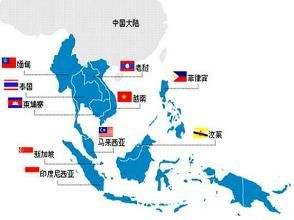With economic globalization and regional economic integration becoming the main trend of world economic development, China and ASEAN have also accelerated the pace of cooperation in the field of international trade in recent years. Recently, in 2019, China (Guangxi) - ASEAN characteristic agricultural products trade docking meeting was held in Nanning. Purchasers from Thailand, Malaysia, Philippines, Vietnam and other ASEAN countries have engaged in trade docking with more than 70 export-oriented agricultural enterprises in Guangxi. Reporters in the interview observed that in the context of the upgrade of consumption between the two sides, trade in agricultural products showed a positive trend, and the structure continued to optimize. Industry insiders said that in the future, there will still be strong growth potential in this field, and agricultural industrial parks and cash crop production bases will expand cooperation space.
"The United States and Europe were our major exporters before, but in recent years the quota for products sold to China is increasing. We prefer to sell our products to China, where proximity is the primary factor. From the logistics point of view, fast, after Chinese customers place orders, more than a week, Philippine products can arrive. However, it takes 40 days or more for the same cargo to Europe and the United States. Jims, general manager of the Philippine Vanite Trading Company, told China Trade News in an interview. At present, the company mainly sells coconut and related products to China, and most of its customers are manufacturers and sellers of coconut products.

With the rapid development of China's economy, the demand for resources or raw materials in China's market is increasing, and the upgrading of China's consumer market is also increasing the demand for Tropical Agricultural products. This has brought sweetness to many traders like Jims. They have turned their eyes to the "big market" at their doorstep. Reporters learned from the Philippine Ministry of Trade and Industry that the official booth scheduled for this year's China International Import Expo has already been scrambled for by Philippine enterprises, many of which are agricultural traders.
The data show that ASEAN is China's largest agricultural trade partner, the largest export market and the second largest source of imports of Chinese agricultural products. In 2018, China-ASEAN agricultural trade totaled 36.04 billion US dollars, accounting for 17% of China's total agricultural trade, of which China exported 17.56 billion US dollars to ASEAN and imported 18.48 billion US dollars from ASEAN. Driven by tax cuts and demand in the FTA, total bilateral agricultural trade grew by 14% annually from 2003 to 2018, higher than the global growth rate of 11.9%. China exports to ASEAN countries mainly vegetables (mushrooms, garlic, agaric, onions, etc.), temperate fruits (citrus, apples, pears, etc.) and aquatic products (cuttlefish and squid, etc.) which are labor-intensive agricultural products. China mainly imports tropical fruits (durian, banana, pitaya, longan, etc.), palm oil, aquatic products (shrimp, catfish, fish meal for feed) and rice from ASEAN.
Industry insiders in an interview with reporters said that both sides have their own advantages in agricultural production, although there is some competition in the field of agricultural trade, but with the change of their consumption structure, complementarity is becoming more and more obvious. In terms of natural conditions, most of ASEAN has a tropical monsoon and rainforest climate. It is high temperature and rainy all year round. It is suitable for growing tropical crops. It is rich in natural rubber, sugarcane, palm fruit, coconut, banana, litchi, longan and other agricultural products. Most of the cultivated land in China is in temperate zone, mainly producing temperate agricultural products. From the analysis of human factors, the two sides are close neighbors, culturally similar, and people flow more and more frequently in the region, which brings favorable conditions for trade cooperation.
In addition, industry insiders also revealed that the two sides also have great potential for cooperation in the processing and upgrading of agricultural products industrial chain, and the demand for cooperation between the two sides is increasing. For ASEAN countries, many of China's agricultural technologies and equipment are "good in quality and low in price", and many of them are ahead of ASEAN. According to Li Jinxiang, chief national veterinarian of the Ministry of Agriculture and Rural Areas, in recent years, China has carried out demonstration projects in ASEAN countries, such as corn planting, rubber seedling production, horticultural crop cultivation, feed processing, pig production, etc., to promote good varieties, agricultural machinery, cultivation and management techniques, and to increase production of some varieties.

In addition, at the level of enterprise communication and interaction, it is also beginning to show results. It is reported that China's "going global" enterprises have built a number of food and economic crop production bases and industrial parks in ASEAN, covering the industrial chain links of planting, breeding, processing, seed industry and warehousing logistics, including grain, aquatic products, fruits, sisal, cassava and other agricultural products. At the same time, the two sides also launched the China-ASEAN Science and Technology Partnership Program, which effectively promoted the agricultural technical cooperation between the two sides. China has held more than 260 training courses on agricultural technology and management for ASEAN countries, attracting more than 4000 agricultural managers and technicians from ASEAN countries and providing human resources support for regional agricultural development.




